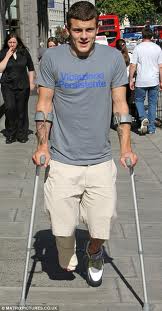Posts Tagged ‘basketball’
Strength and conditioning for basketball: some thoughts.
If you think that basketball conditioning should resemble a scene from Coach Carter with repeated running in straight lines, you might be mistaken.
 I am lucky enough to train some good young basketball players. Most of them arrive with some sort of work ethic and overall athleticism.
I am lucky enough to train some good young basketball players. Most of them arrive with some sort of work ethic and overall athleticism.
What does Jack Wilshere have in common with a Dinosaur?
 They both suffer from stress fractures!
They both suffer from stress fractures!
Poor old Jack Wilshere will be watching the Champion’s League Final from the comfort of his own home this week.
Could he have helped Arsenal get to the final if he hadn’t suffered from a stress fracture in training?
Read MoreIs it the shoes? 3 tips to improve your vertical jump.
Basketball players looooove their shoes. Even NBA players have succumbed to the allure of shiny new shoes that claim to improve your vertical jump. But more than shoes, there are some simple ways of improving your vertical jump (or Vertical in the basketball vernacular). Get stronger legs. Sounds simple, but improving your overall leg strength…
Read MoreWilland Rovers FC in F.A. Cup run
Good luck to the Willand Rovers against Gosport Borough F.C.
My local village club is doing really well in the F.A. Cup this year, having made it through to the 4th qualifying round. They host Gosport at Silver Street this Saturday.
Physiotherapist Sarah has been helping the club for the last 18 months, screening and treating the players when injured. They are a great bunch, and remarkably polite for footballers.
Read MoreWorld Cup Fever: Top 5 football fitness blog posts
World Cup Fever is upon us
 Love it or hate it, there is no getting around it (although I am going to Houston for GAIN next week and that is probably a football desert!).
Love it or hate it, there is no getting around it (although I am going to Houston for GAIN next week and that is probably a football desert!).
I thought this would be a good time to highlight the top 5 football related blog posts since the last World Cup:
Read More